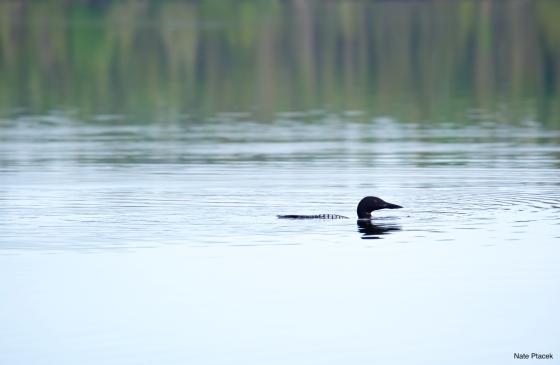The clean waters and healthy forests of the Boundary Waters are just as much a paradise for animals as they are to paddlers.
Rare and threatened species take shelter in the 1.1-million acres of Wilderness, and it plays a crucial role in natural climate regulation. For generations, the Boundary Waters ecosystem has nurtured a wealth of benefits for wildlife and the environment — but that shouldn’t be taken for granted.
Want to test your knowledge of the Boundary Waters’ ecosystem before reading any further? Take this quiz to see how much you know:
Endangered species find refuge in the Boundary Waters
The Boundary Waters ecosystem preserves biological diversity by harboring a number of rare or endangered species. Three federally threatened species — the gray wolf, the Canada lynx, and the northern long-eared bat — can be found in the Boundary Waters. The moose and lake sturgeon, both species of special concern to the state of Minnesota, also enjoy the protection of the Wilderness. The low level of human development near and around the Boundary Waters gives these otherwise vulnerable species a safer space to roam.
The Wilderness provides us with natural tools to fight climate change
Within the Boundary Waters sits miles of boreal forests and wetlands, which act as a natural defense against rapid climate change. This ecosystem is often referred to as a carbon sink, due to its ability to store or convert large concentrations of carbon. Reducing human-made carbon emissions is critical to limiting the increase in global temperature along with preserving existing carbon sinks - such as the Boundary Waters' wetlands and forests.
Sulfide-ore copper mining would permanently damage ecological stability
The Boundary Waters ecosystem’s ability to capture and store carbon, as well as its biological diversity, would suffer greatly from a proposed copper mine near the Wilderness. Toxins from acid mine drainage would contaminate the water that many species rely upon. Additionally, mine construction requires deforestation, which would further limit habitat space for struggling species and release already-captured carbon. Despite its short predicted lifespan of roughly 20 years, a Twin Metals mine would cause long-term issues for the Boundary Waters ecosystem.
An act of Congress is the best chance to ensure permanent protections for the Boundary Waters and its many wildlife species. U.S. Rep. Betty McCollum’s Boundary Waters Protection and Pollution Prevention Act (H.R. 2794) is currently under consideration by the House Natural Resources Committee. We need you to take action to protect the Boundary Waters ecosystem today.
The Boundary Waters is home to a distinctly healthy ecosystem of plants and animals. Head to our wildlife page to learn more about the widespread disruptions that toxic copper mining would cause for the wildlife of the Boundary Waters.
